Leaving Our Hotel
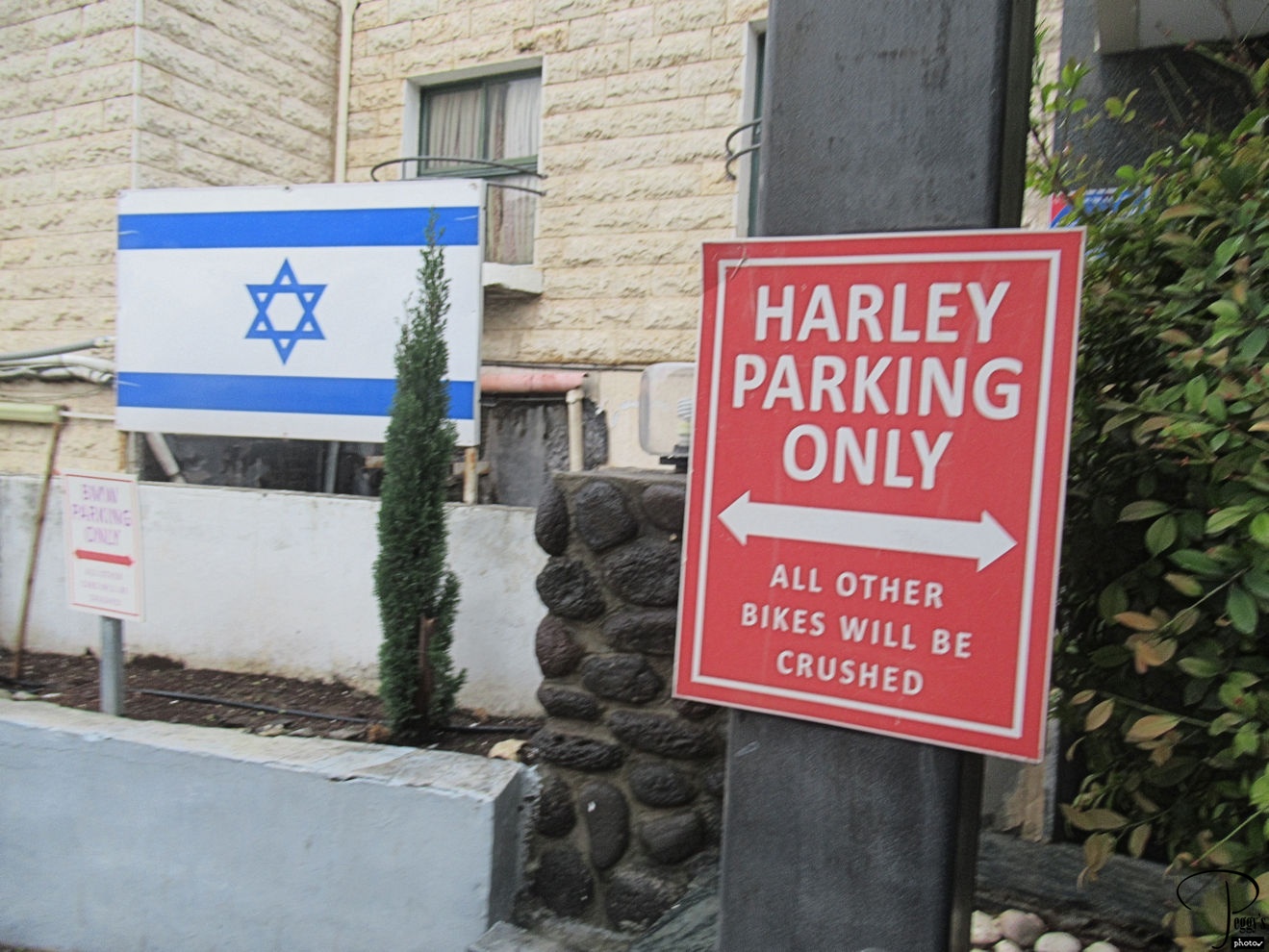
Day 8 (Day 3 of the Gate 1 Tour). We left our very nice hotel, the Ron Beach Hotel, in Tiberias to travel to Jerusalem, where we would spend the night. The hotel had a sense of humor.

Leaving Our Hotel
Leaving Tiberias
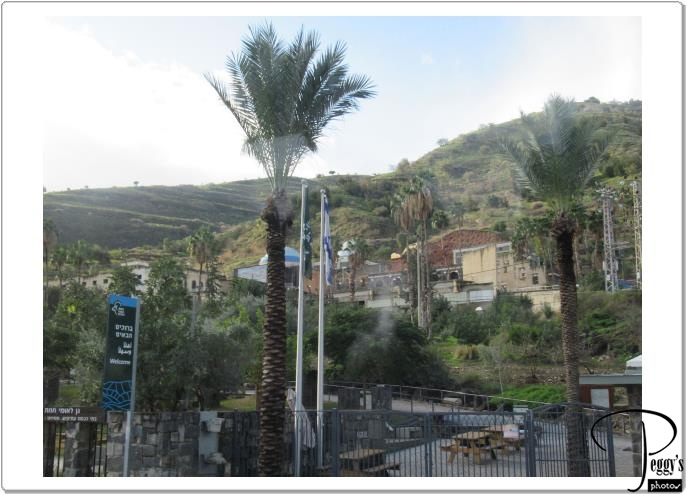
A view of Tiberias, named after the second emperor of the Roman Empire, Tiberias. Tiberias is one of the four holy cities in Judaism due to an influx of rabbis in the 18th and 19th centuries who established it as a center for Jewish learning.

Leaving Tiberias
National Diamond Center
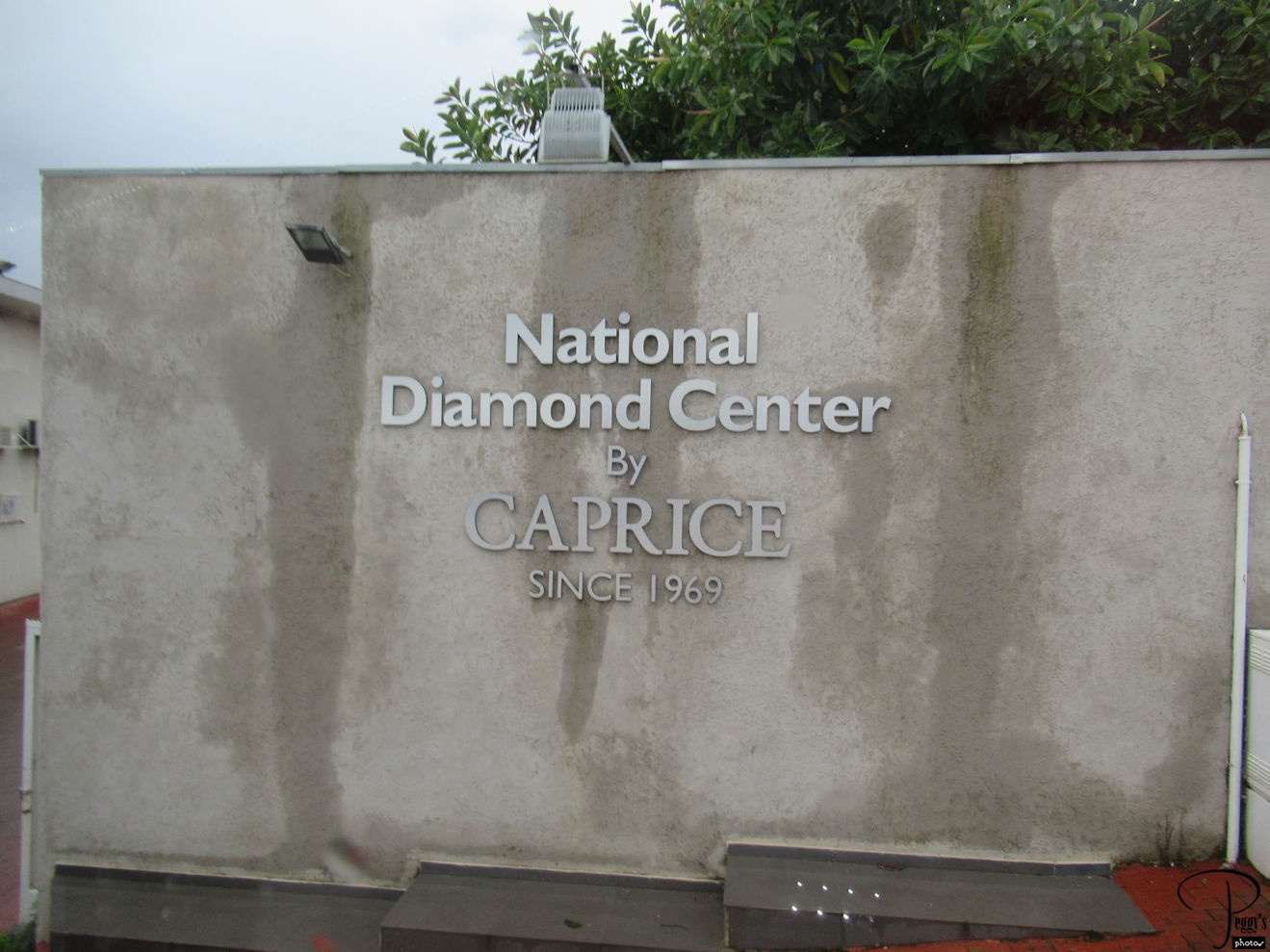
Our first stop of the day was in Tiberias at the National Diamond Center. In Tel Aviv, its Diamond Exchange, called the “Bursa,” is the world’s largest diamond trading complex. It purchases rough diamonds from mines throughout the world.

National Diamond Center
How Diamonds Are Rated
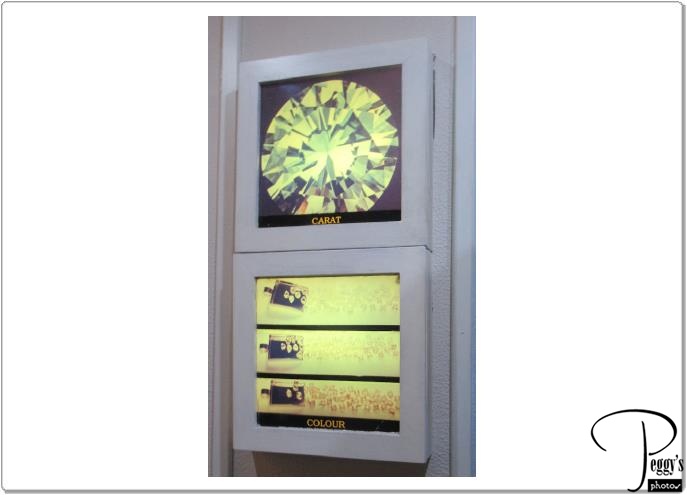
We were given a lecture at the Diamond Factory as to how diamonds are rated: by carat weight, color, clarity, and cut.

How Diamonds Are Rated
Rough Diamonds
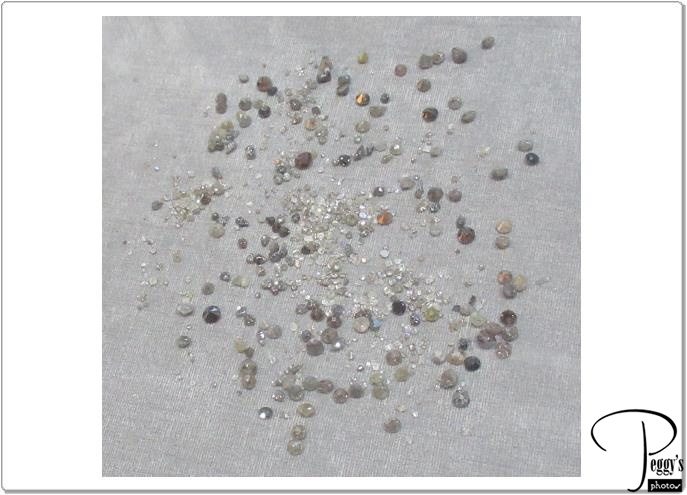
I thought seeing these rough diamonds, as diamonds are found in the mines, was very interesting and now understood where the saying “diamond in the rough” comes from.

Rough Diamonds
Diamonds for Sale
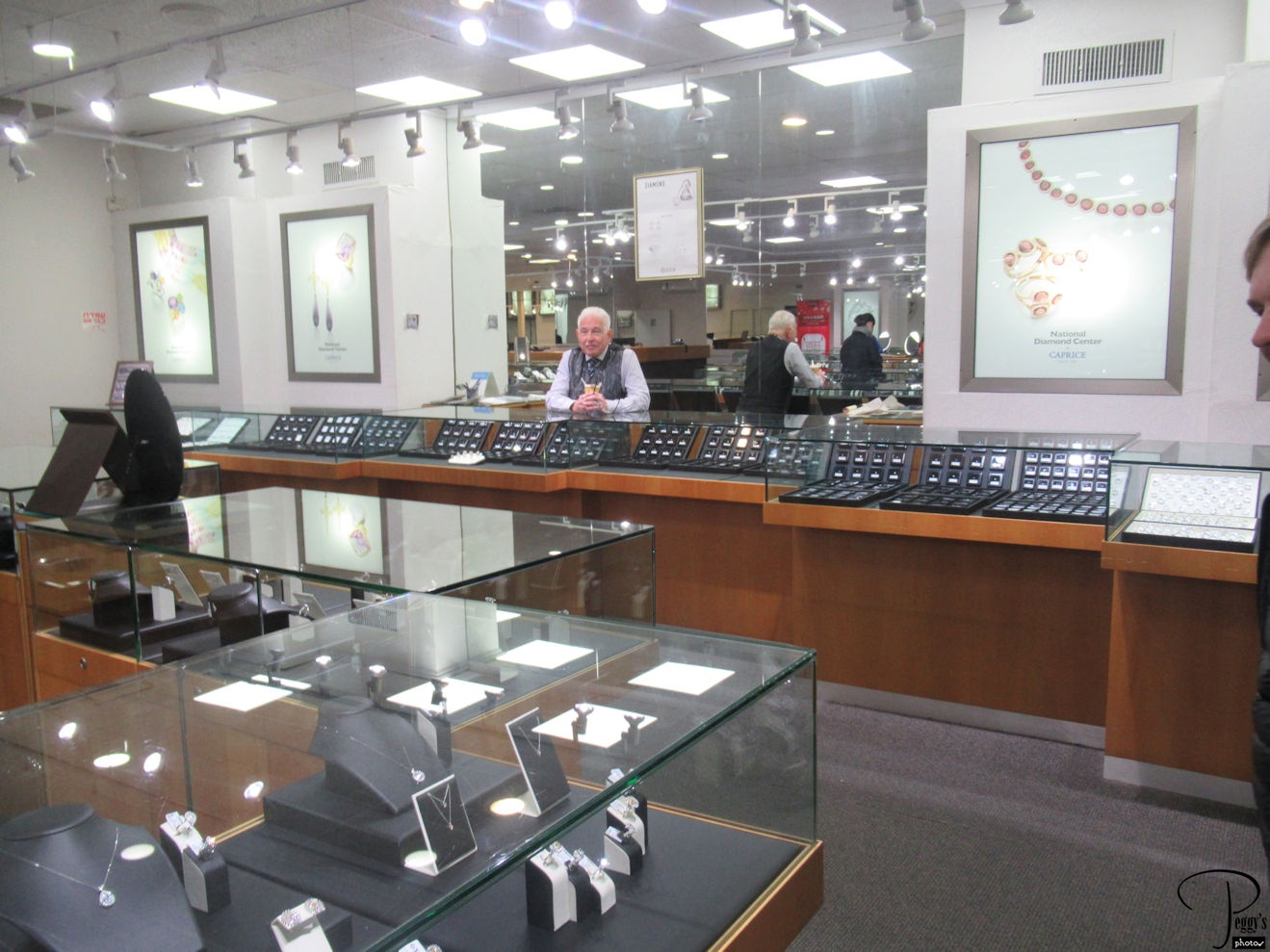
Many, many diamonds for sale.

Diamonds for Sale
On the Road
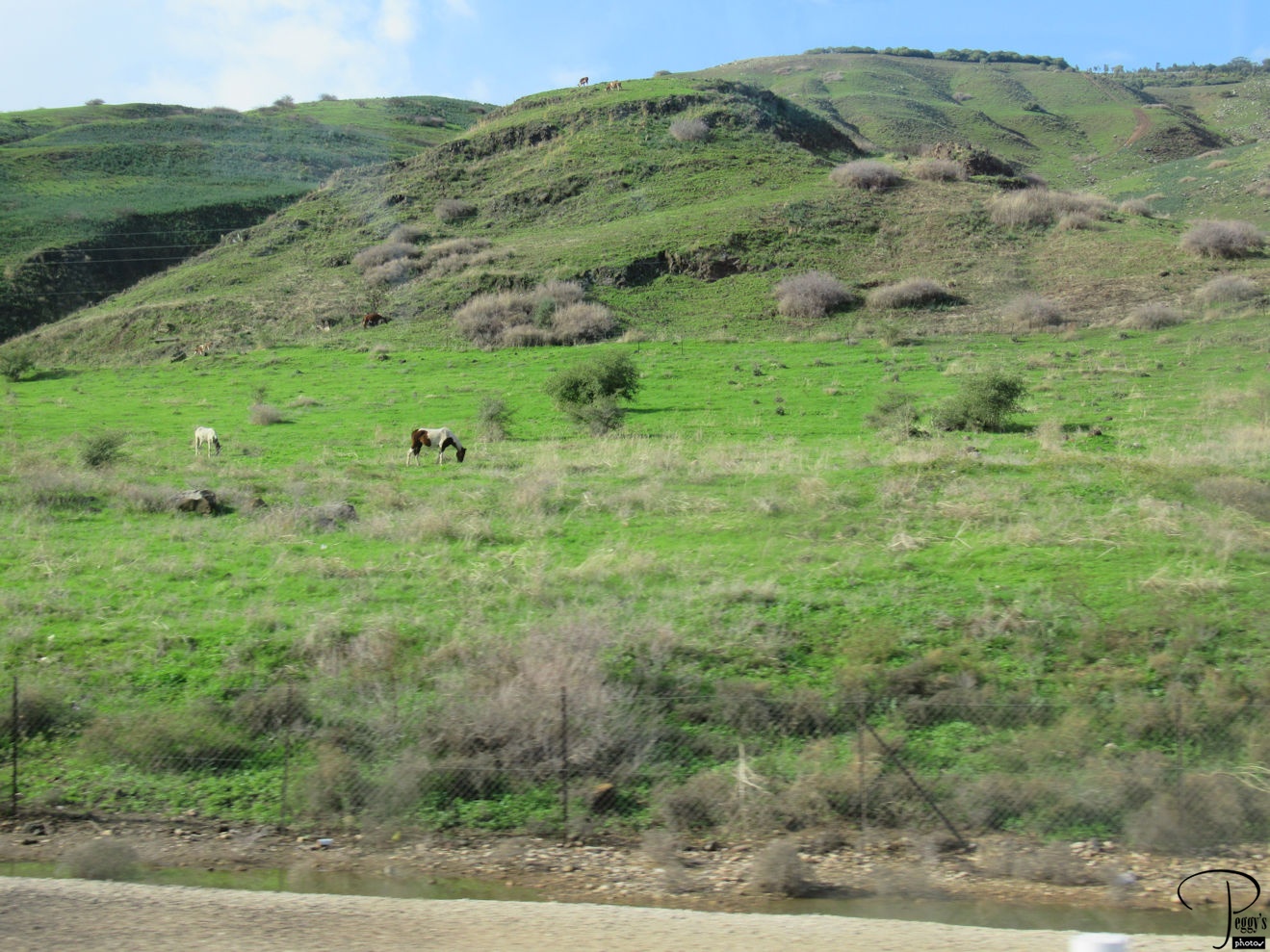
Scenery on the way to Jerusalem.

On the Road
To Jordan
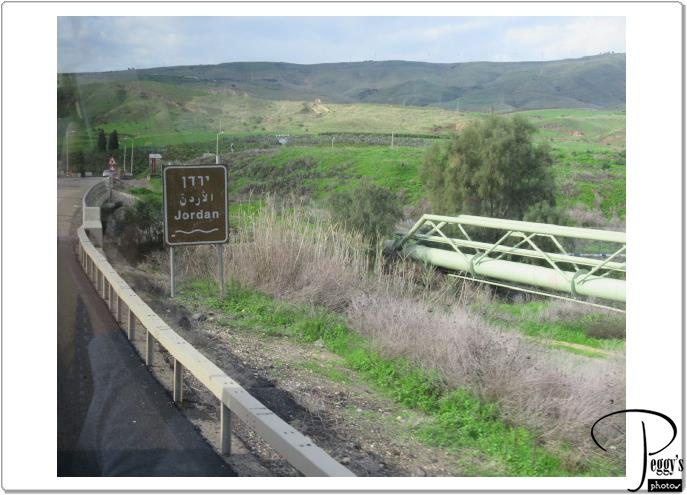
If we stayed on this road, we would have been in Jordan.

To Jordan
Jordan
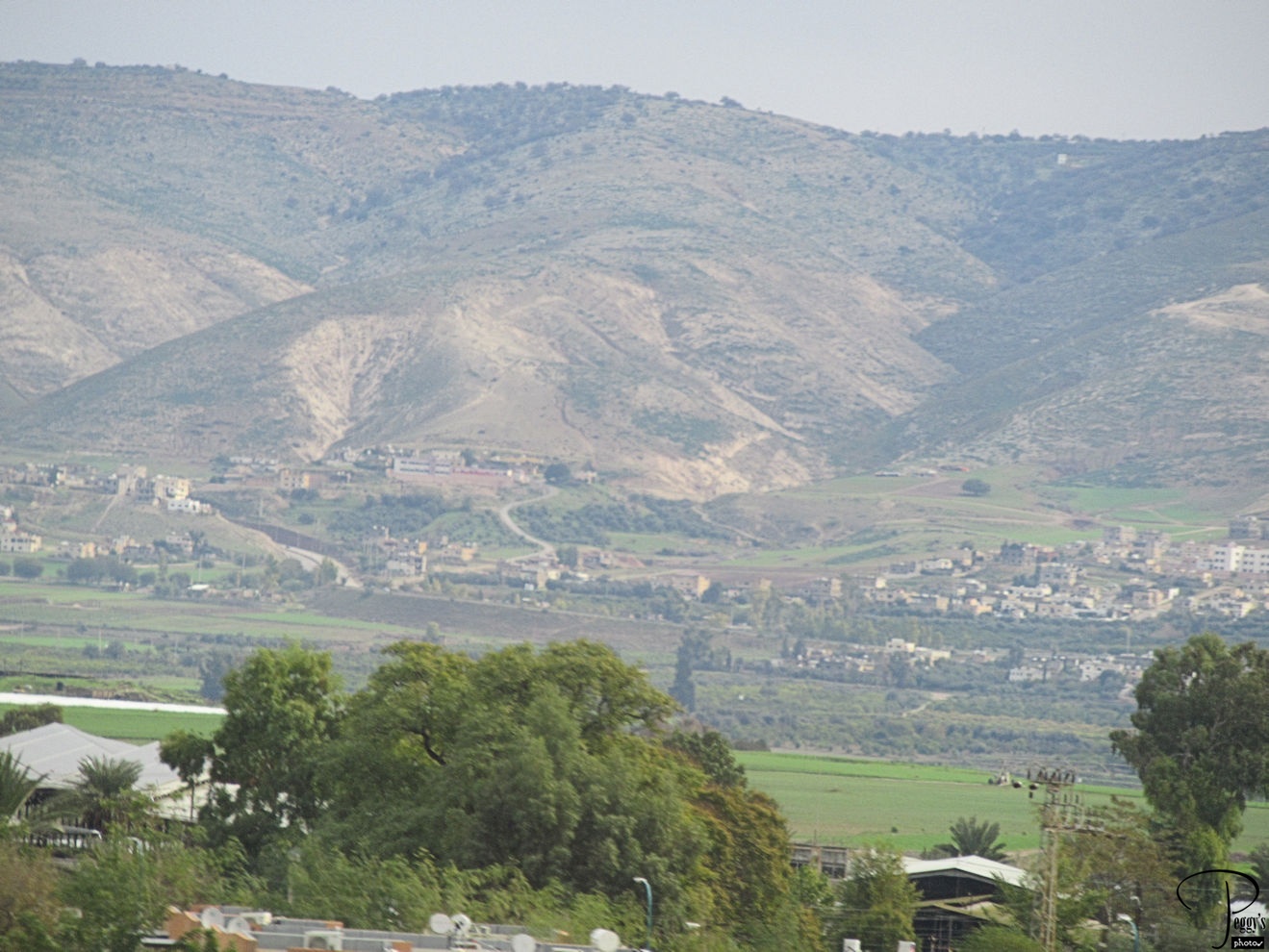
The town in the photo, seen from our bus, is in Jordan.

Jordan
Beit She’an National Park
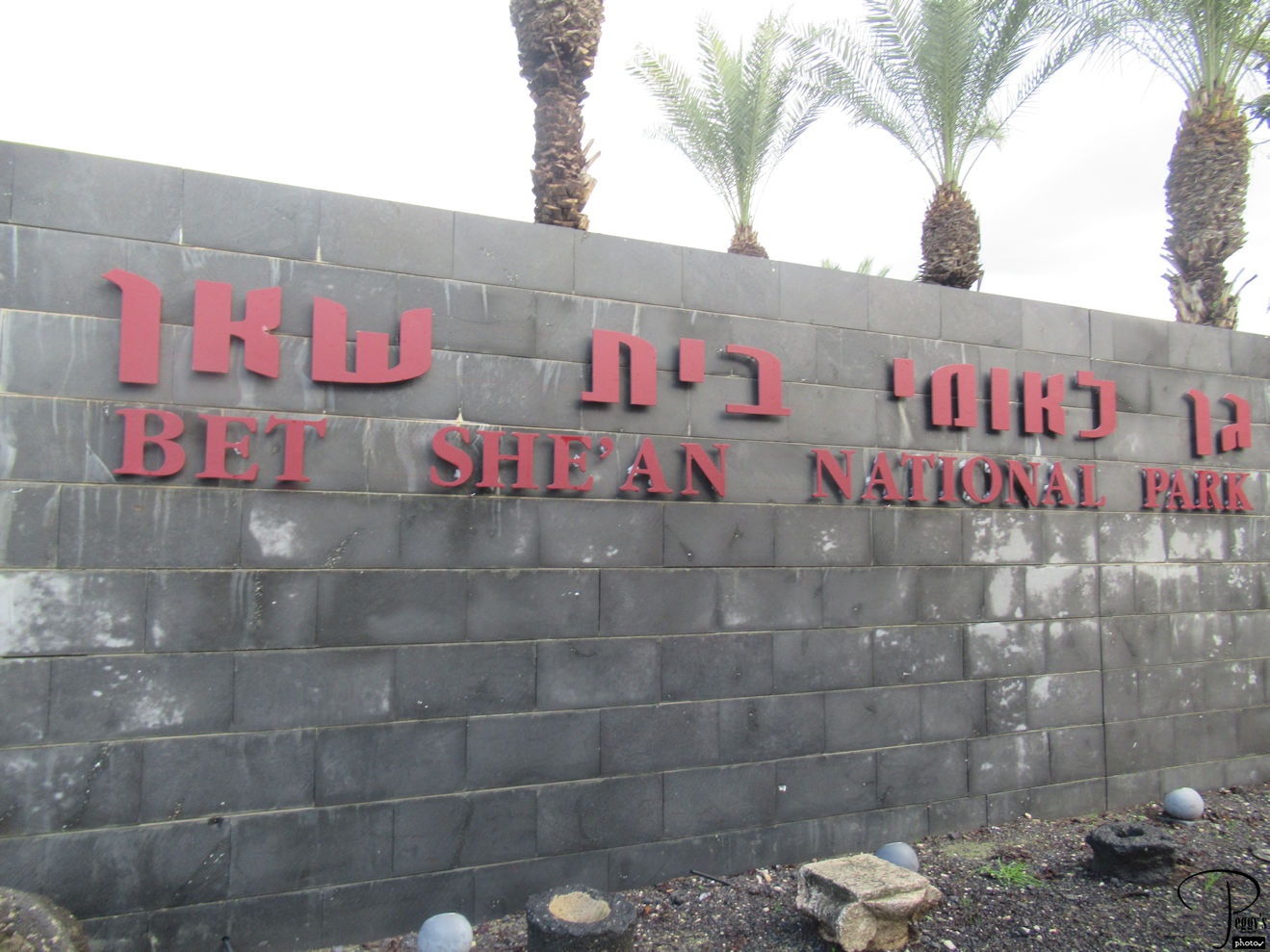
Our next stop was at Beit (also spelt Bet) National Park. In the Biblical account of the battle of the Israelites against the Philistines on Mount Giboa, the bodies of King Saul and three of his sons were hung on the walls of Beit She’an. In Roman times, Beit She’an was the leading city of the Decapolis, which was a league of pagan cities.

Beit She’an National Park
Beit She’an
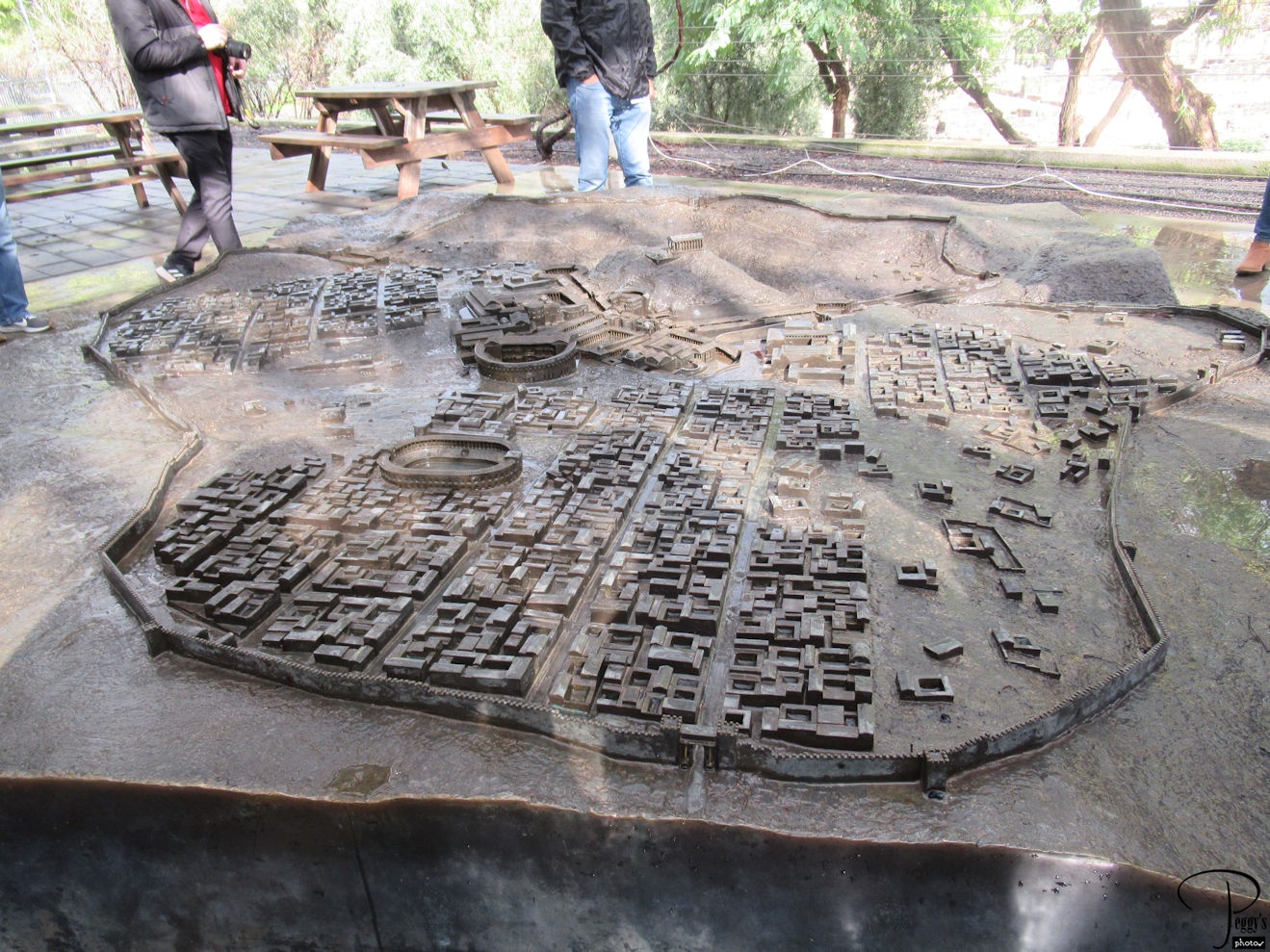
A mockup of what the ancient Roman city of Beit She’an looked like. Beit She’an was ruled by different people but in 63 BC it was conquered by the Romans.

Beit She’an
Beit She’an
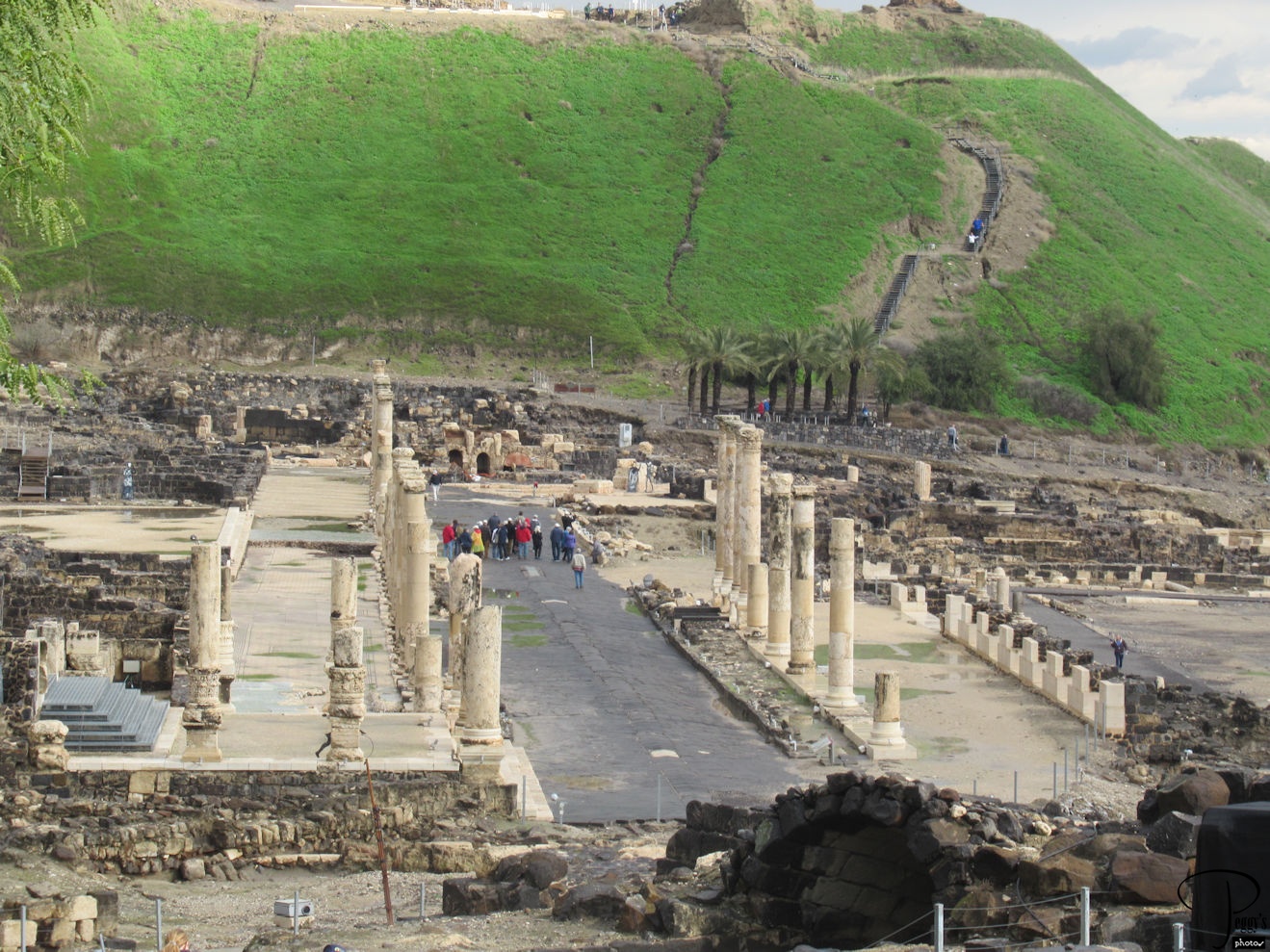
The ruins of Beit She’an today. Much of it was destroyed by an earthquake in 749. Its streets were colonnaded.

Beit She’an
Beit She’an
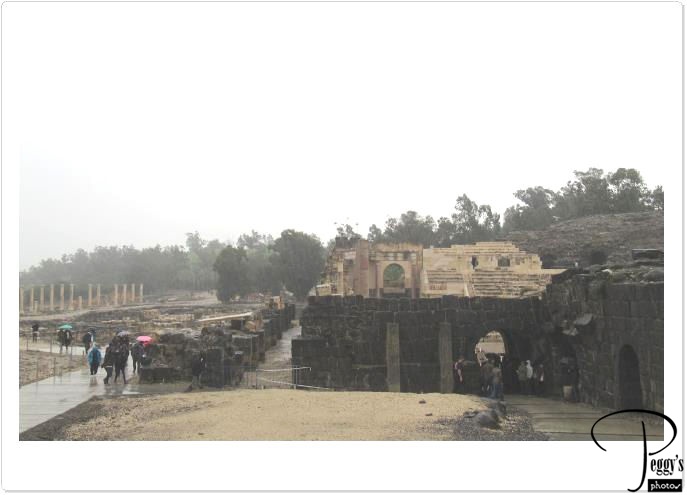
There is a Roman 7,000–set theatre here, still in use today. At Beit She’an, there are also temples, bath houses, public latrines, a ritual area, a public fountain, and a basilica. The rain really started coming down heavily while we were here.

Beit She’an
Jordanian Border
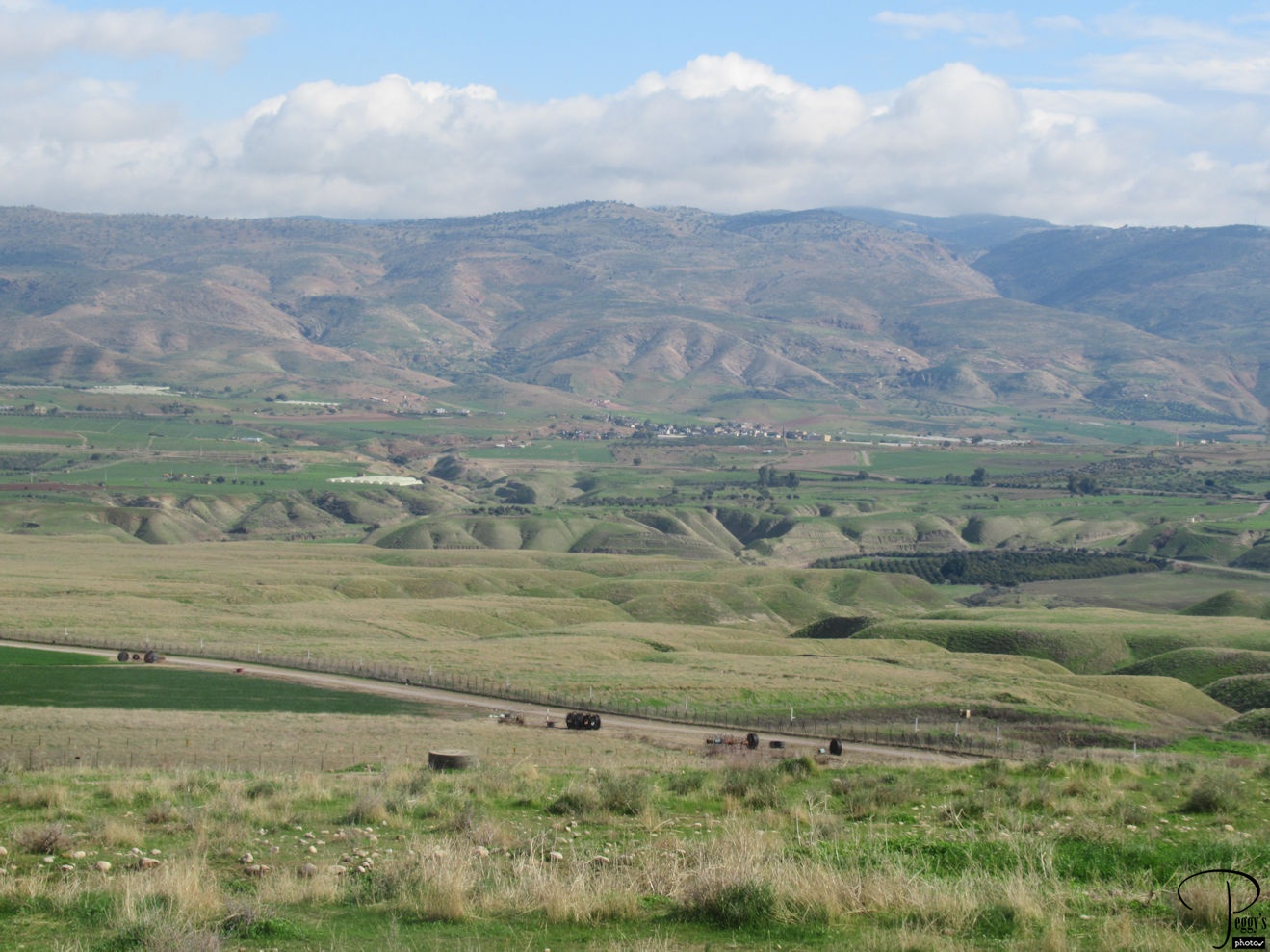
We were driving along the Jordanian border on our way to Jerusalem.

Jordanian Border
Jordanian Border
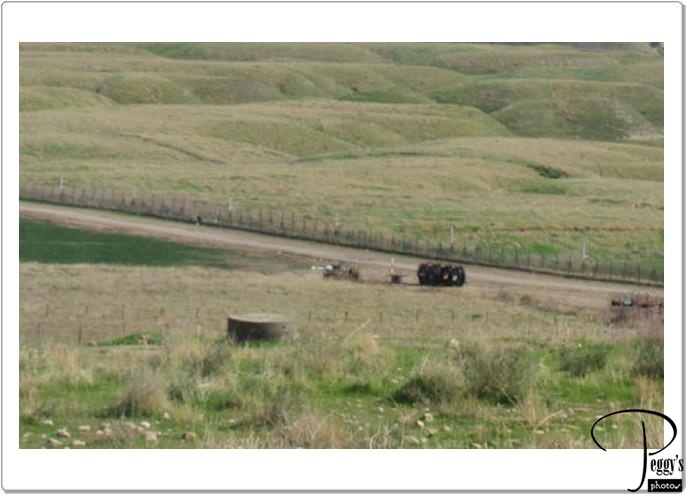
In this close–up. you can see the fence separating Israel from Jordan. It is a “smart fence,” one that will tell the Israel soldiers when someone is trying to breach the fence. Our bus broke down here.

Jordanian Border
Help from the Israeli Army
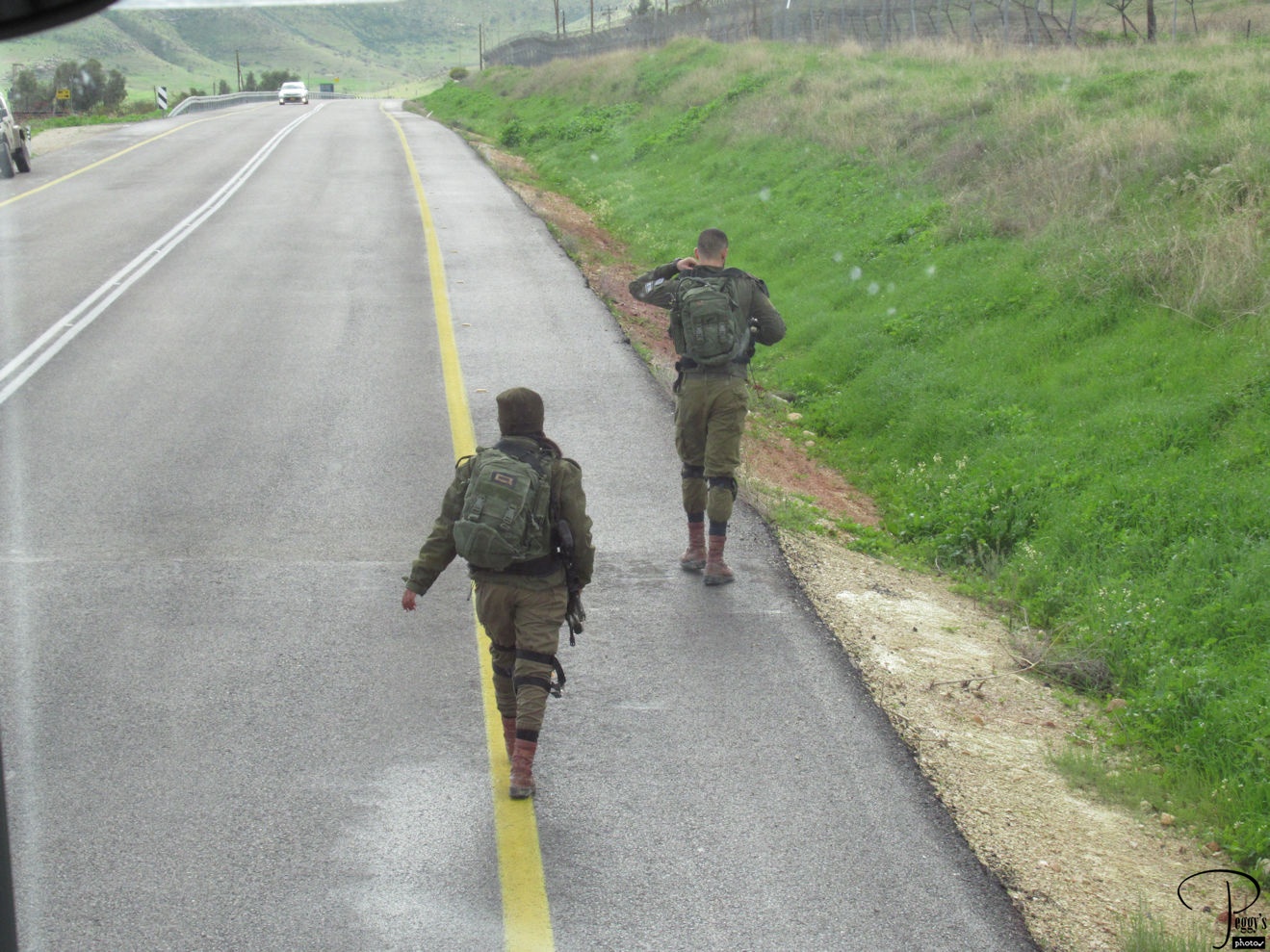
Our bus broke down in an Area C. There are three administrated areas divided by the 1995 Oslo II Accords: Area A, which is exclusively administrated by the Palestinian Authority; Area B, administrated by both the Palestinian Authority and Israel; and Area C, administrated by Israel and which contains Israeli settlements. Two Israeli soldiers came to see why we were not moving. It was a bit dangerous as to where our bus was parked––in one of the lanes of a two–lane road without a shoulder. We were blocking the road. The soldiers came and then left to take care of another matter.

Help from the Israeli Army
Help from the Israel Police

An Israel policeman came next to help us. He was originally from Atlanta, Georgia, U.S.A.

Help from the Israel Police
The Bus Part
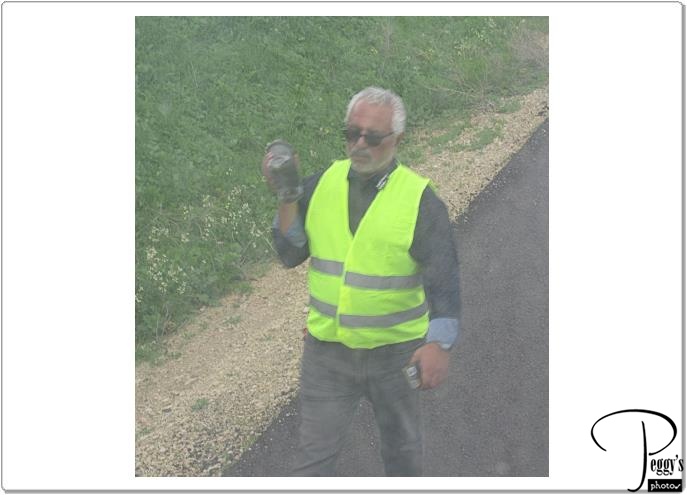
Our bus driver went in search of the part that dropped off the bus. It could not be put back on easily, so a new bus was called for us, which took two hours to get to us. A taxi was called for our driver to pick up sandwiches and drinks for us––it was lunch time. Bathroom facilities were a ditch for women and anywhere for men. Our original schedule for the rest of the day was for us to be in Jerusalem in time to take an optional tour to Bethlehem. But this tour had to be rescheduled for another day as we would be in Jerusalem too late to take it.

The Bus Part
Skirting Jericho
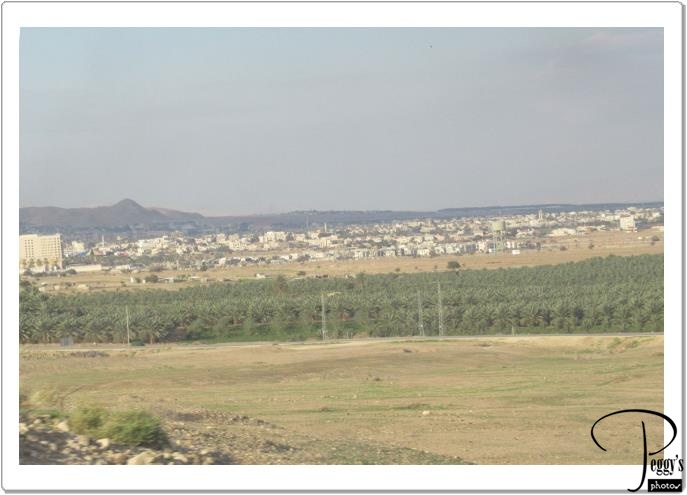
Jews are not allowed in Jericho which is in Area A and I assume an Israeli bus, so we had to make a wide detour to avoid Area A on our way to Jerusalem. We could see Jericho from the bus.

Skirting Jericho
On the Way to Jerusalem
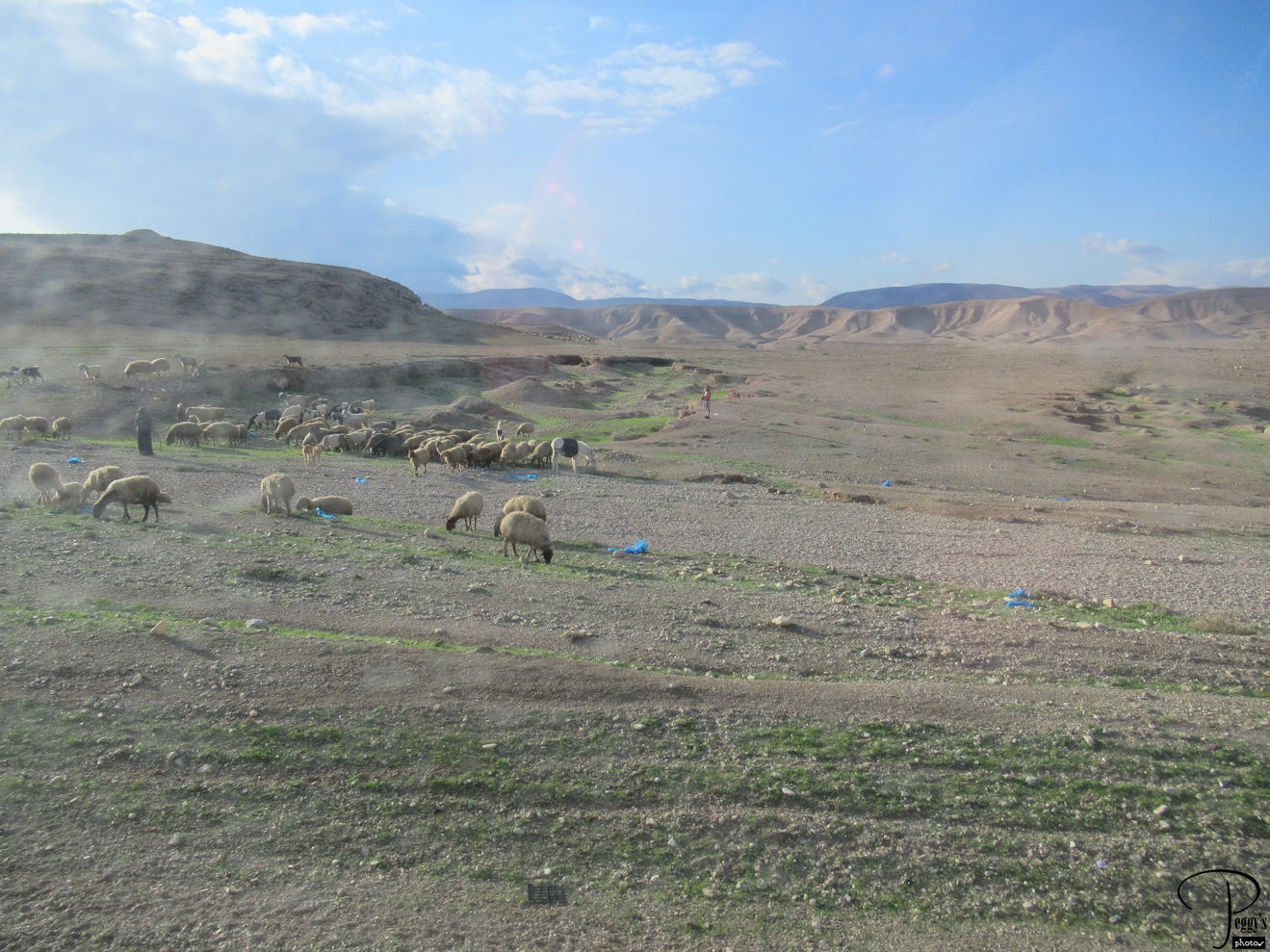
Scenery on the way to Jerusalem.

On the Way to Jerusalem
Jerusalem
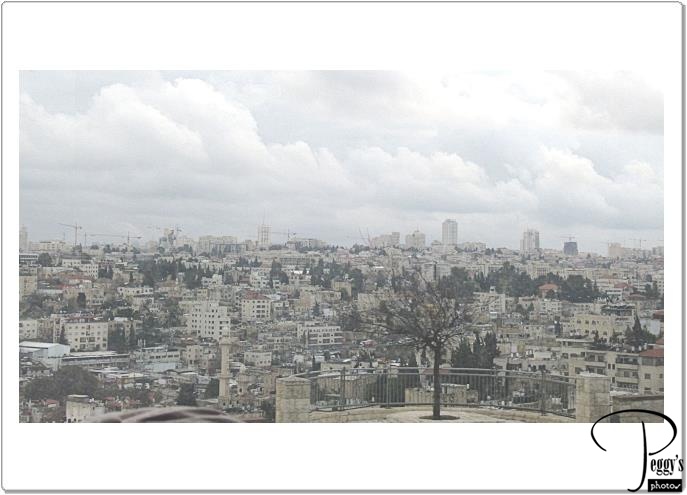
Our first view of Jerusalem.
I have put my photos of the Diamond Factory, Beit She’an, and coming into Jerusalem on a slideshow. Go to https://www.peggysphotos.com/diamonds–beit–shean–jerusalem/ (Slide Shows, Middle East, Israel, “Diamonds, Beit She’an, and Jerusalem”).

Jerusalem
Jerusalem
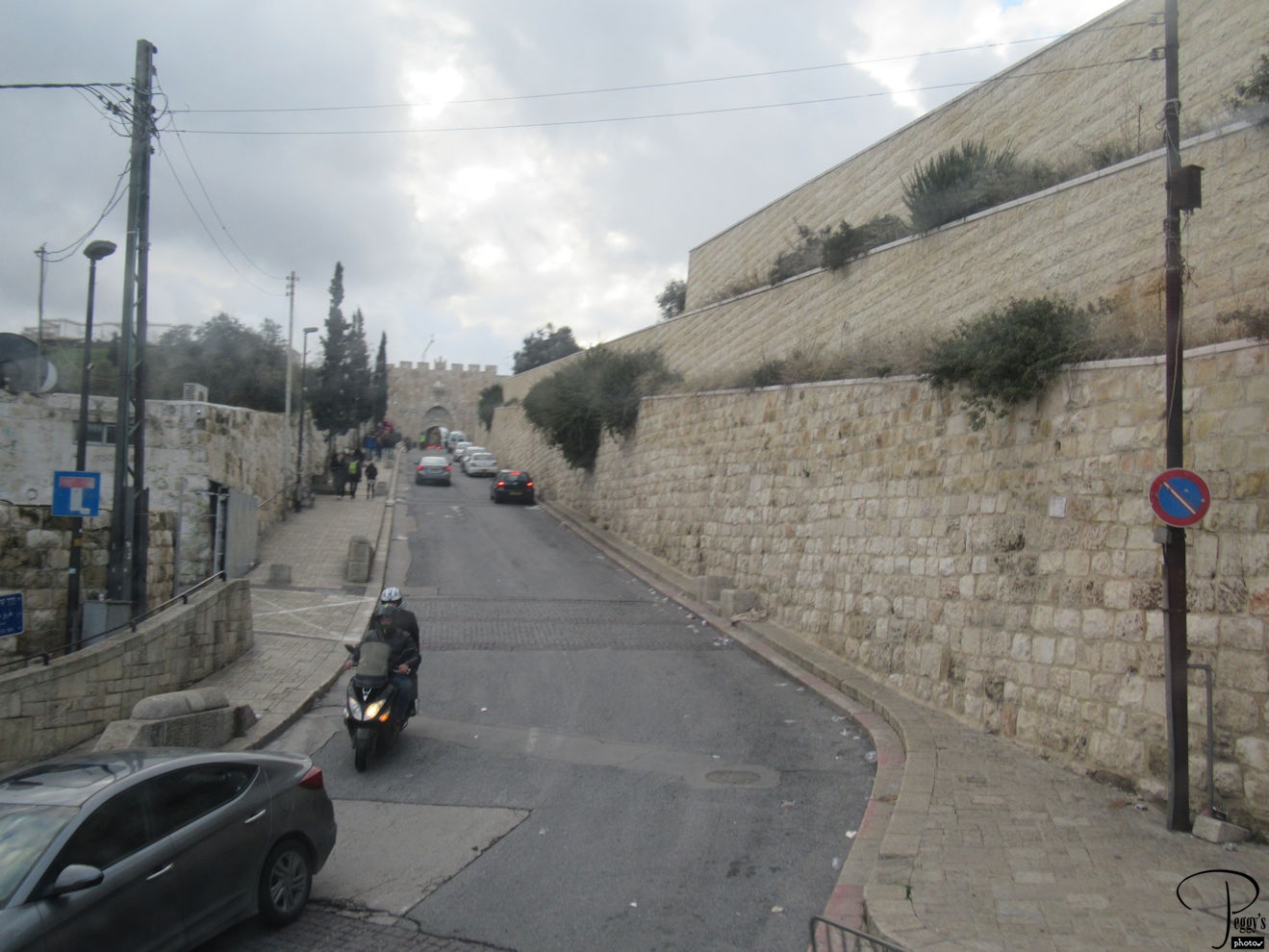
With our change of plans for the day, we went instead to the Western Wall in the Old City of Jerusalem. The city walls and gates were built in 1535–1542 for defense by Ottoman Sultan Suleiman the Magnificent. In the photo, you can see the Dung Gate in the rear, the entrance to the Jewish Quarter and the Western Wall.

Jerusalem
Dome of Al-Aqsa Mosque
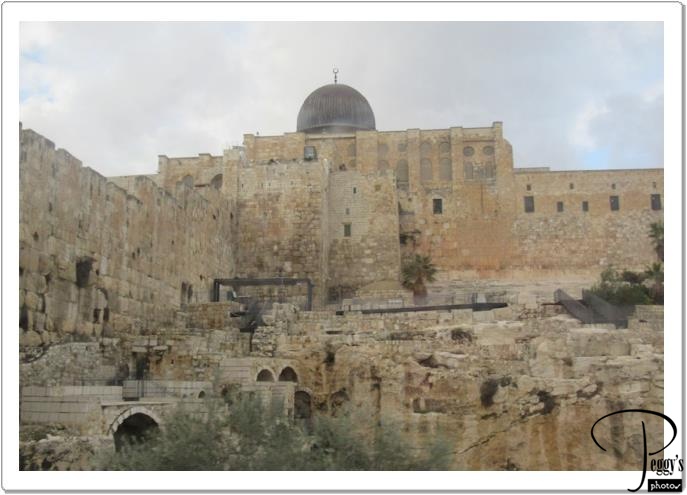
The black dome is of the Al–Aqsa Mosque, built in 1035, is the third holiest site in Islam. It is in the Muslim Quarter of the Old City.

Dome of Al-Aqsa Mosque
Western Wall
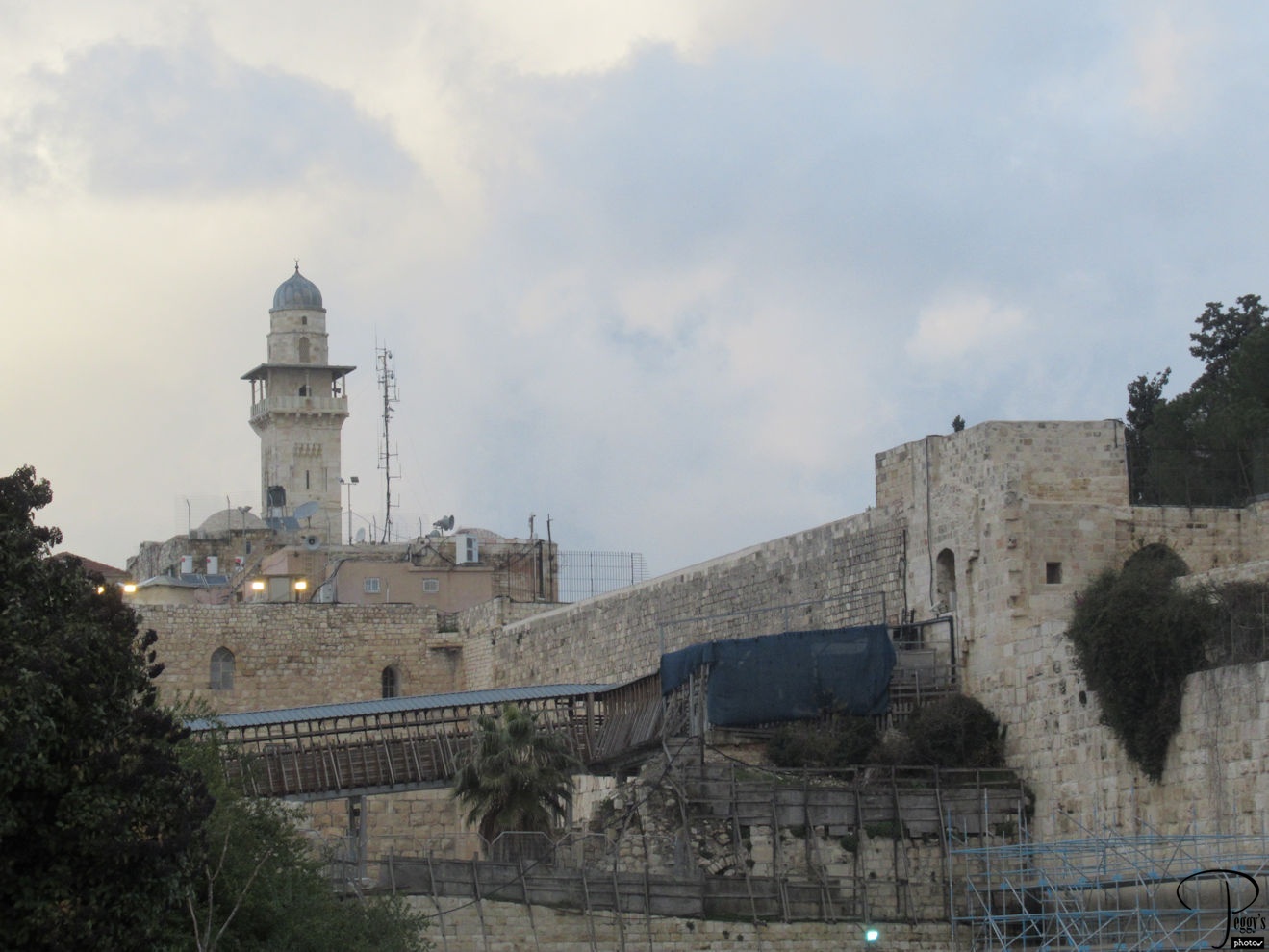
The minaret is of the Al–Aqsa Mosque. The Western Wall is the wall in the middle of the photo. The wall was originally erected to shore up the hill known as the Temple Mount by Herod the Great for the expansion of the Second Temple. The Second Temple was originally built by Jewish exiles, then expanded by Herod the Great, then destroyed by the Romans in 70 AD. The First Temple was built by King Solomon in the 10th century BC on the Temple Mount and was destroyed by the army of Nebuchadnessar, the Babylonian king, in 586 BC. The bridge in the photo takes you up to the Temple Mount, but Jews are not allowed on the Temple Mount, the situation leading to the wall being called “The Wailing Wall”: the crying of Jews that the closest they can get to the site of the Second Temple is the wall.

Western Wall
Western Wall Entrance
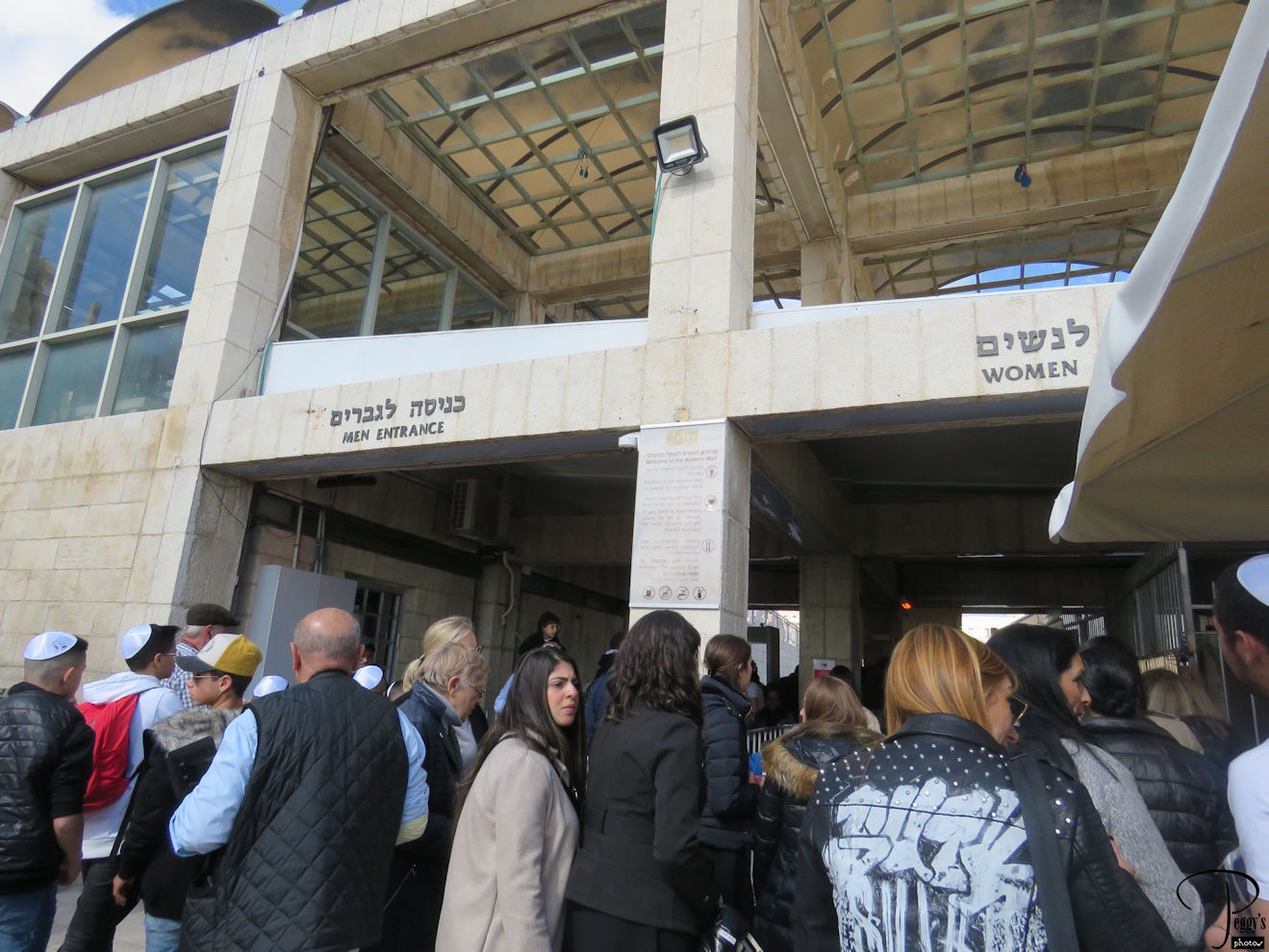
Men and women have separate entrances to enter the Western Wall Plaza in the Jewish Quarter of the Old City.

Western Wall Entrance
Western Wall Plaza
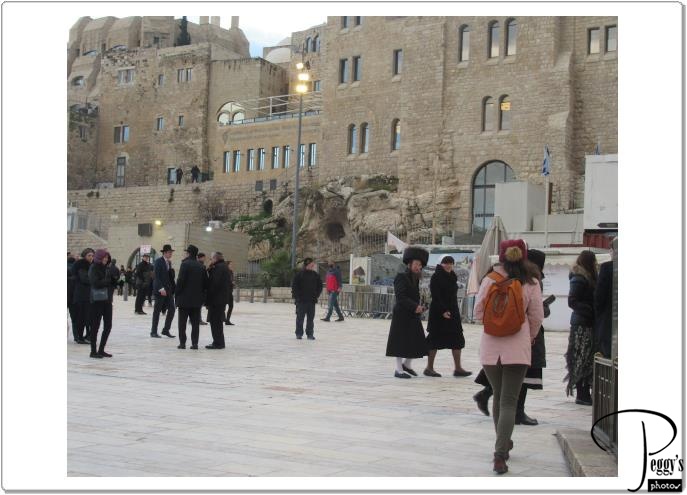
But men and women meet again on the plaza. The Jewish Sabbath was soon to begin––the time from Friday evening to Saturday evening when three stars appear in the sky.

Western Wall Plaza
Western Wall, Women’s Side
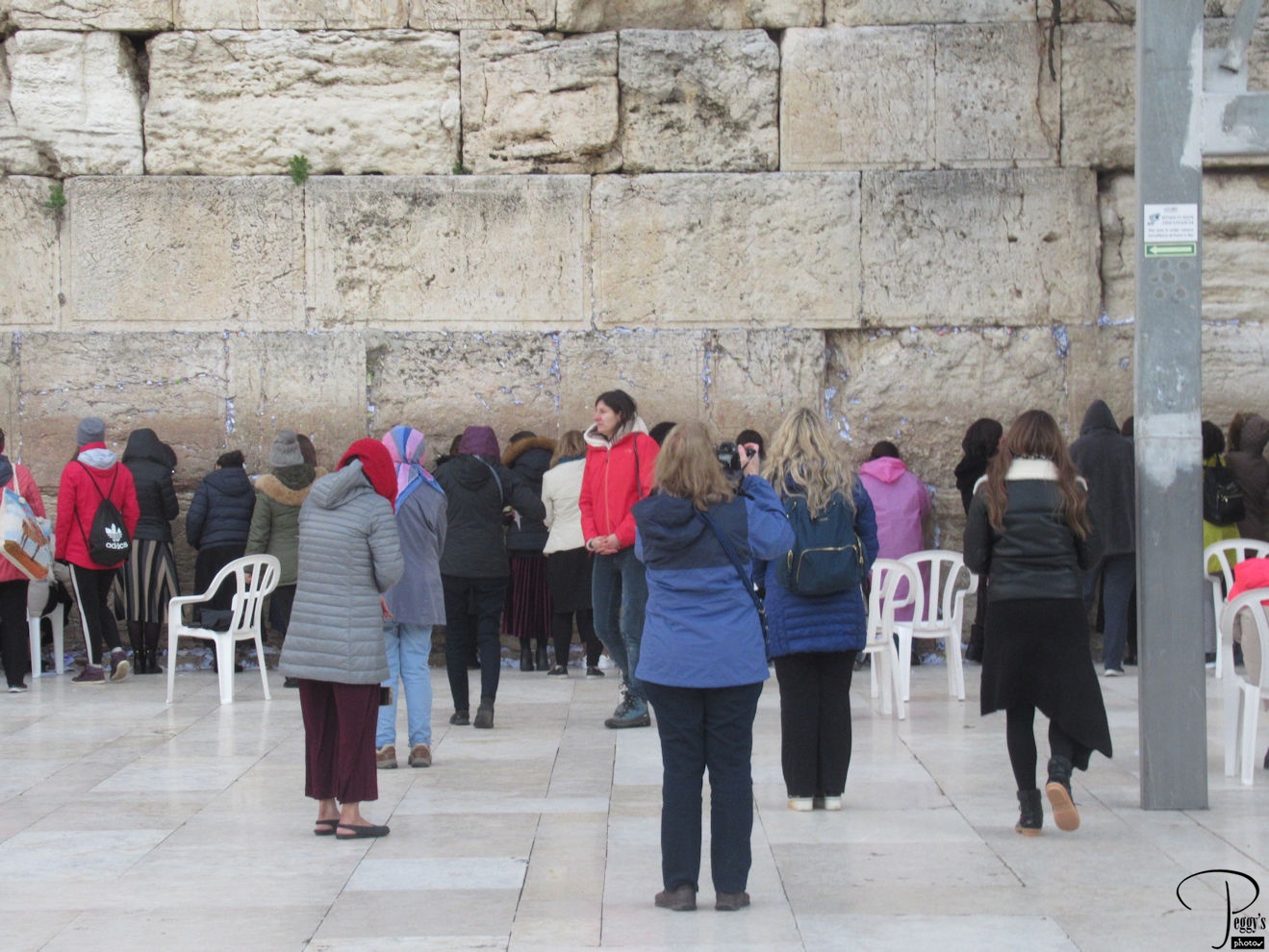
Women have to pray on one side of the Western Wall, with men on another side. The Israel government gave control over the wall to the Ultra–Orthodox Hareidi, and in their beliefs, men and women must pray separately so that the men will not be distracted during prayer. There is supposed to be a place where women and men can pray together (something women have fought for and won), but I didn’t see it.

Western Wall, Women’s Side
Western Wall Prayers
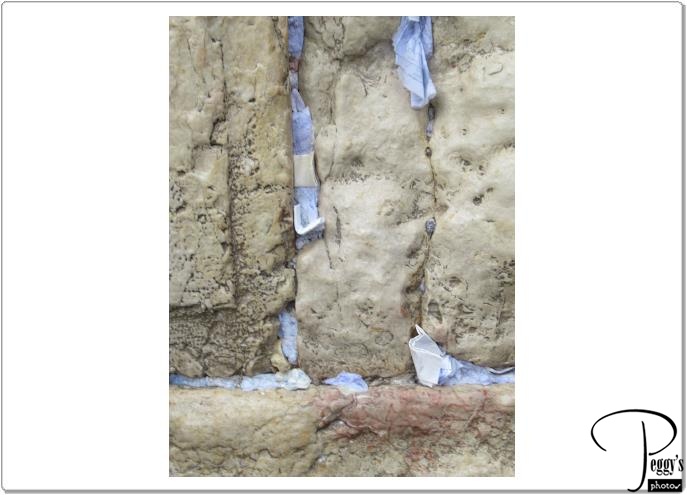
If you want, you can write a prayer or a wish on a piece of paper and then stick it into a putty–like substance in a crack in the wall.

Western Wall Prayers
Western Wall, Men’s Side
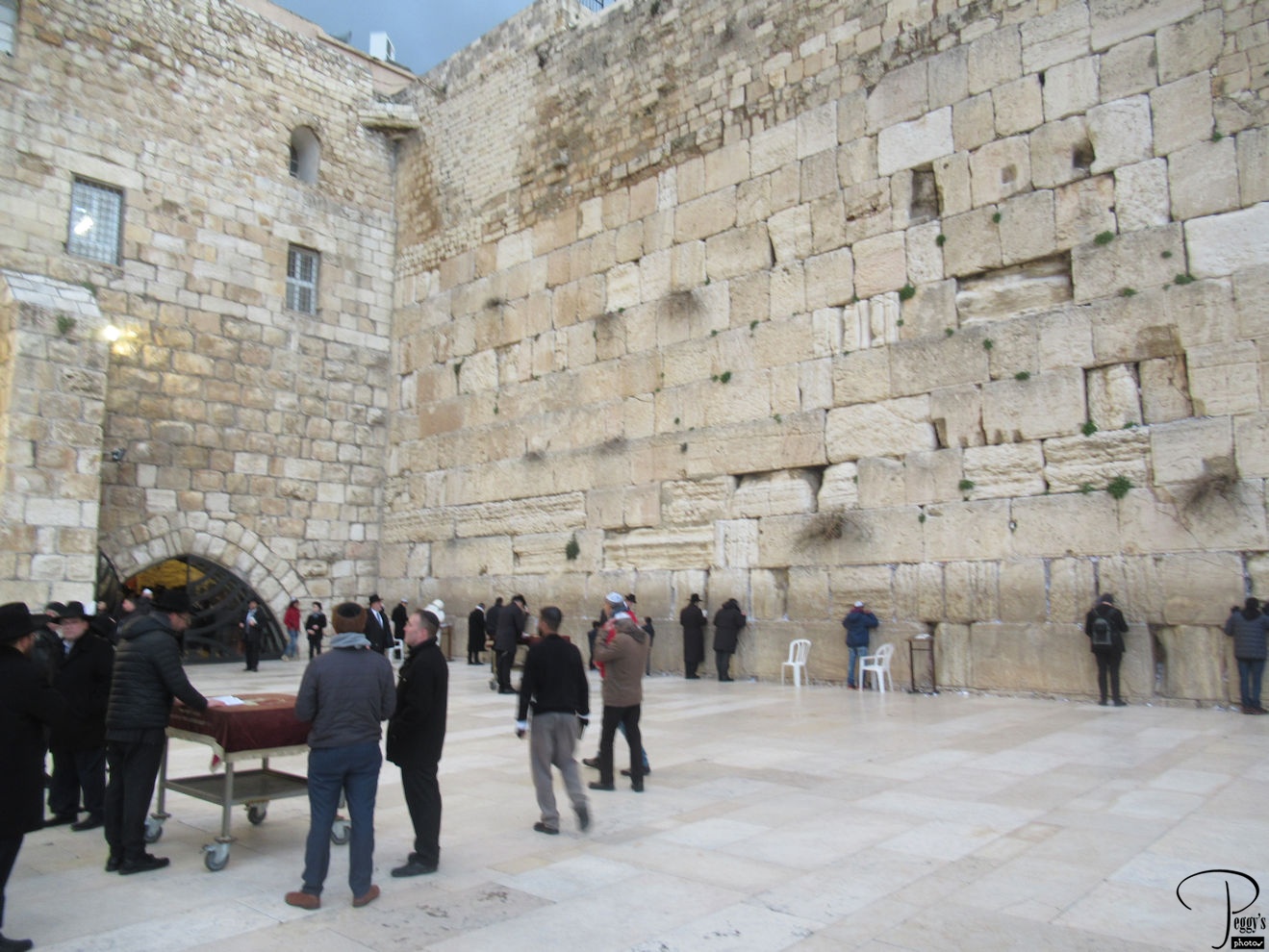
The men were given a much bigger section of the wall, because in the Hareidi school of thought, men have more of an obligation to pray than do women and so need more space. It was hard to see into the men’s section but one of my male tour mates took this photo for me.

Western Wall, Men’s Side
Nightfall
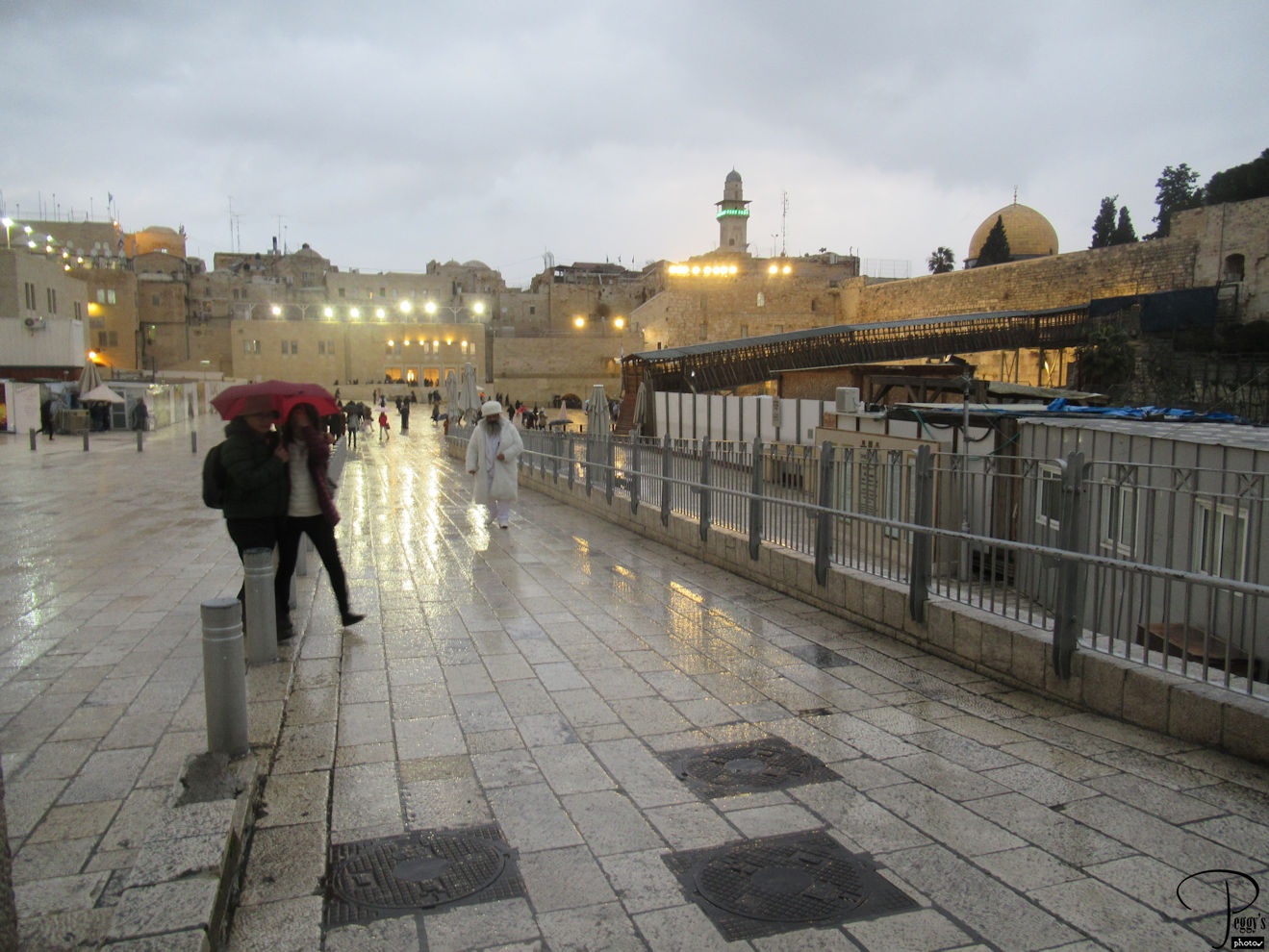
The night had fallen and the Jerusalem city was lit up. It also started to rain.

Nightfall
Nightfall and the Sabbath
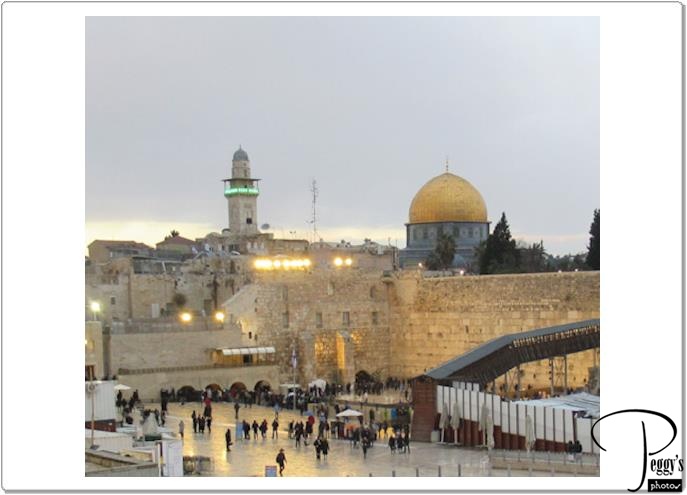
There was a viewpoint up some wet steps. One of my tour mates took this photo for me from the top of the steps. The golden dome is the Dome of the Rock. We next went to our hotel in Jerusalem where a couple of us found that we could not get cappuccino anywhere in the hotel on the Sabbath. Also, on the Sabbath, no work is allowed. Pushing an elevator button is considered work, so there are Sabbath elevators which stop at every floor, their doors open long enough for their passengers to get on and off, and then travel to the next floor and they do this for at least 24 hours. We were curious as to why waitstaff and other employees at the hotel were able to work on the Sabbath. We found out that most of the employees in the hotels are Muslims and some Bedouins.
I have put my photos of the Western Wall on a slideshow. Go to https://www.peggysphotos.com/western–wailing–wall/ (Slide Shows, Middle East, Israel, Jerusalem, “Western (Wailing) Wall”).
